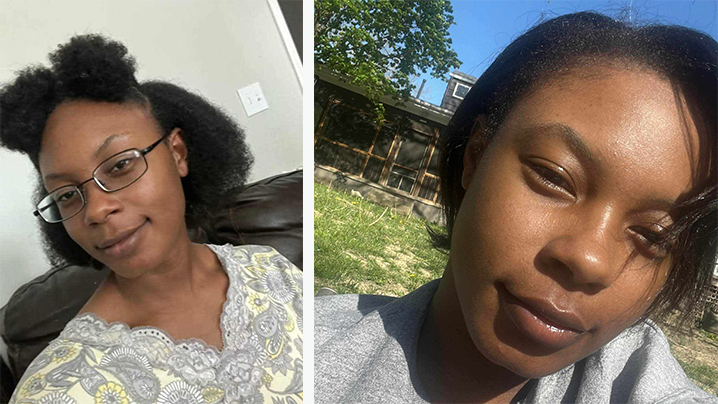Cooler temps mean fire safety even more important
Published 8:00 am Sunday, December 5, 2021

- Photo by Angela Cutrer At least three residences in Lincoln County have suffered some fire damage within the past two weeks, including this one just on Old Brook Road in Brookhaven.
If you are asked to sit quietly for two minutes, the time passing might seem painfully slow.
However, two minutes is not long when a fire starts in your home because that’s pretty much all the time you may have to escape, according to the Red Cross.
“During a fire, early warning from a working smoke alarm plus a fire escape plan that has been practiced regularly can save lives,” said the Red Cross, which offers top tips for fire safety.
Trending
Install smoke alarms on every level of your home, inside bedrooms and outside sleeping areas and check them each month to ensure they are working. “Test your smoke detectors to make sure they work,” said Brookhaven Fire Department Chief Jeff Ainsworth.
It’s best to schedule a date you will remember, say the first or 15th of every month. And choose an annual date to change the battery, no matter if it’s still working. Some people do so every New Year’s Day because it’s easy to remember to put something “new” on a day when a new year.
Regardless of which date you choose, be consistent so that it becomes a habit to test once a month, change batteries once a year and go over escape plans as often as you can.
Talk with all family members about a fire escape plan and practice the plan twice a year. Ensure that all household members know two ways to escape from every room of your home and know the family meeting spot outside of your home.
It’s also important to teach children what smoke alarms sound like and what to do when they hear one. Practice escaping from your home at least twice a year. Press the smoke alarm test button or yell “fire” to alert everyone that they must get out. Also make sure everyone knows how to call 9-1-1.
Putting a fire prevention plan in place helps everyone know where to meet. Tell family members, especially children, to go directly to the safe spot and to remain there until the fire officials arrive.
Trending
Establish a family emergency communications plan and ensure that all household members know who to contact if they cannot find one another.
The U.S. Fire Administration states children and older adults accounted for nearly half (49 percent) of all fire deaths and 27 percent of fire injuries in 2019. Designing a fire prevention plan and designating a meeting spot can significantly reduce risks of anyone going back into a fire, which is dangerous. A fire emergency evacuation plan details how you and your family can exit in a safe and appropriate manner.
If a fire occurs in your home, get out, stay out and call for help. Never go back inside for anything or anyone. Teach household members to STOP, DROP and ROLL if their clothes should catch on fire.
Be wary of space heaters and how you connect them to outlets. Chief Ainsworth said the fire control business revs up when temperatures drop and people bring out their space heaters. One such recent Brookhaven house fire might have started from an overheated extension cord.
“People sometimes want to heat their homes with these little heaters, but the worse thing they could do is run [the heater] off an extension cord,” he said. “They will overheat, so if you are going to use one, make sure you plug it directly into an outlet. Those cords are meant to be temporary, not permanent. And make sure they are at least three feet away from anything else, like a couch or curtains or clothing.”
Ainsworth added that covering an extension cord to minimize it from view for aesthetic reasons or so no one will trip on it only makes things worse because it adds fuel for a fire.
Buy only heaters evaluated by a nationally recognized laboratory, such as Underwriters Laboratories (UL), and check to ensure it has a thermostat control mechanism that will switch off automatically if the heater falls over.
Vent kerosene heaters and don’t overfill.
Never fill, refill or use a portable generator indoors.
Do not use a stove as a heat source. Ainsworth said one of the three most recent fires in Brookhaven might have started from the use of a stove to heat the home. “Some people try to heat their homes with a stove and it’s not good practice,” he said. “I know some folks have just always done it that way and there’s nothing you can say to stop them, but it’s just not a good idea. And definitely don’t leave [the stove] unattended.”
Inspect and clean woodstoves, chimneys and fireplaces for damage or obstructions. A fireplace screen should be heavy enough to stop a rolling log and big enough to cover the entire opening of the fireplace to catch flying sparks. Don’t leave the house or go to bed until you are sure the fire is completely out.
Stay in the kitchen when when frying, grilling or broiling. It takes only a moment of inattention for tragedy to strike. Need to leave the room? Turn off the stove to be safe.
Wear close-fitting or tightly rolled sleeves when cooking and remember that every home needs a fire extinguisher.
Taking it outside? If so, make sure your barbecue grills remains 10 feet or more away from siding, deck railings, eaves and overhanging branches.
Other hazards to watch out for are faulty electronic devices, wiring and cables; overloaded or defective plug sockets; cooking and heating appliances; combustible materials and flammable liquids placed near heat sources; cigarettes, lighters and open flames; and unattended candles.
The National Fire Protection Association’s recent report on home fires shows that U.S. fire departments responded to about 366,600 home structure fires from 2007-2011. These fires caused an estimated average of 2,570 civilian deaths, 13,210 civilian injuries, and $7.2 billion in direct property damage per year.
Seven people died each day in U.S. home fires.
“Three out of five home fire deaths occurred in homes without working smoke alarms, which emphasizes the importance of taking personal responsibility when it comes to protecting yourself and your family from fire,” says Lorraine Carli, vice president of communications for NFPA. “Installing and maintaining these alarms could save a majority of the lives lost in home fires.”
Government website Ready.gov offered hints on the behavior of fire:
• Fire is FAST! In fewer than 30 seconds, a small flame can turn into a major fire. It only takes minutes for thick black smoke to fill a house or for it to be engulfed in flames.
• Fire is HOT! Heat is more threatening than flames. Room temperatures in a fire can be 100 degrees at floor level and rise to 600 degrees at eye level. Inhaling this super-hot air will scorch your lungs and melt clothes to your skin.
• Fire is DARK! Fire starts bright, but quickly produces black smoke and complete darkness.
• Fire is DEADLY! Smoke and toxic gases kill more people than flames do. Fire produces poisonous gases that make you disoriented and drowsy. Asphyxiation is the leading cause of fire deaths, exceeding burns by a 3-to-1 ratio.





